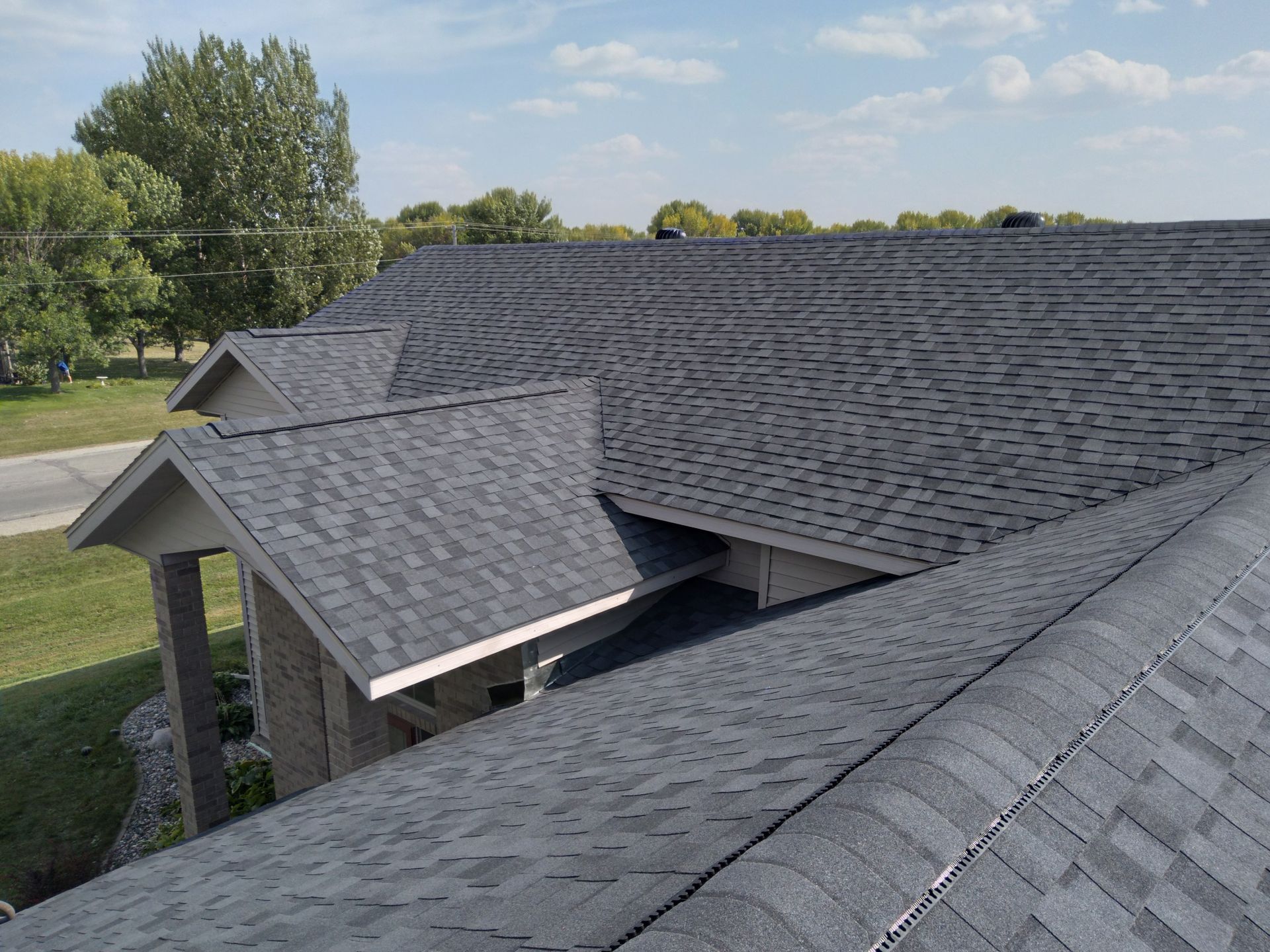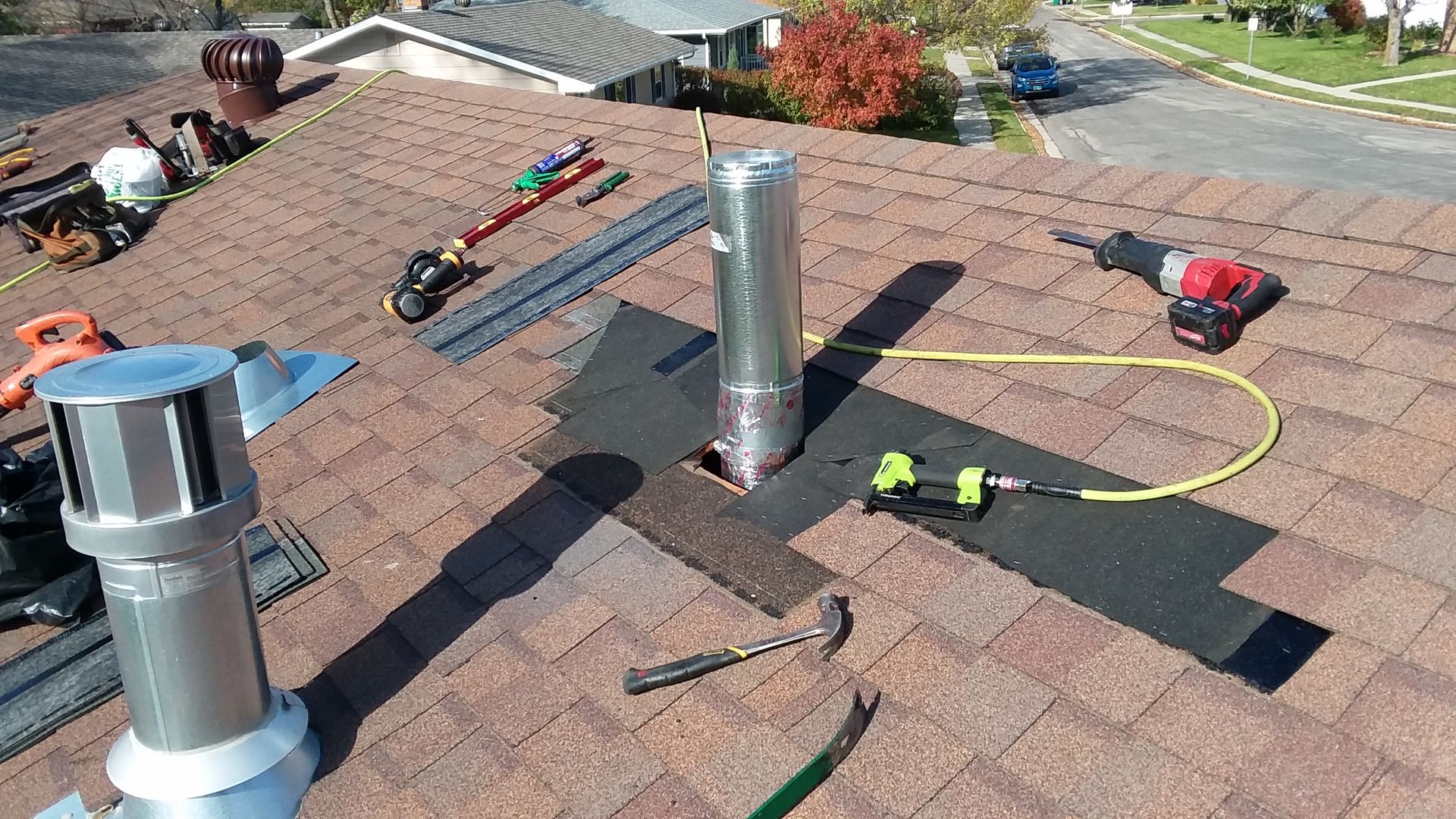Roofing Service Request
We will get back to you as soon as possible.
Please try again later.
Roofing You Can Trust for Your Fargo-Moorhead Home
Asphalt Shingle Roofing with Premium Materials and Competitive Financing
We're a Fargo-Moorhead roofing contractor that has been serving the local community and surrounding areas since 2011. Whether you have a leak in your roof or you want an update, you’ll be happy you hired Asset Services LLC for roofing or roof repair. We don’t claim to be the best roofing company in the area, focusing instead on delivering the highest quality roofing work for every homeowner we serve.
We offer some of the best-quality roofing material manufacturer products, with a range of asphalt shingles including Atlas Castlebrook, Atlas Briarwood Pro, CertainTeed Landmark (Class 3 Impact-Rating), CertainTeed Landmark-PRO (Class 3 Impact-Rated), CertainTeed Northgate ClimateFlex (Class 4 Impact-Resistant), Velux Skylight Windows, Lomanco Ventilation, and Broan-NuTone roof duct vent caps. It is important to acknowledge that architectural asphalt shingles are commonly referred to as composition, composite, dimensional, fiberglass, laminate, and laminated shingles or roof tiles.
Explore convenient 3rd-party roof financing options from PowerPay, enabling you to make reasonable monthly payments, instead of depleting your hard-earned savings to replace your roof. Discover the advantages of a home improvement loan from PowerPay, featuring a soft credit pull, low monthly payments, flexibility to borrow up to $100k and no loan origination percentage fee or prepayment penalties.
If you’ve been searching the Red River Valley for a skilled roofing contractor to install or repair your roof, turn to Asset Services LLC. Get a free estimate as soon as possible by calling us at (701) 552-2533 or submit a roofing service request form.
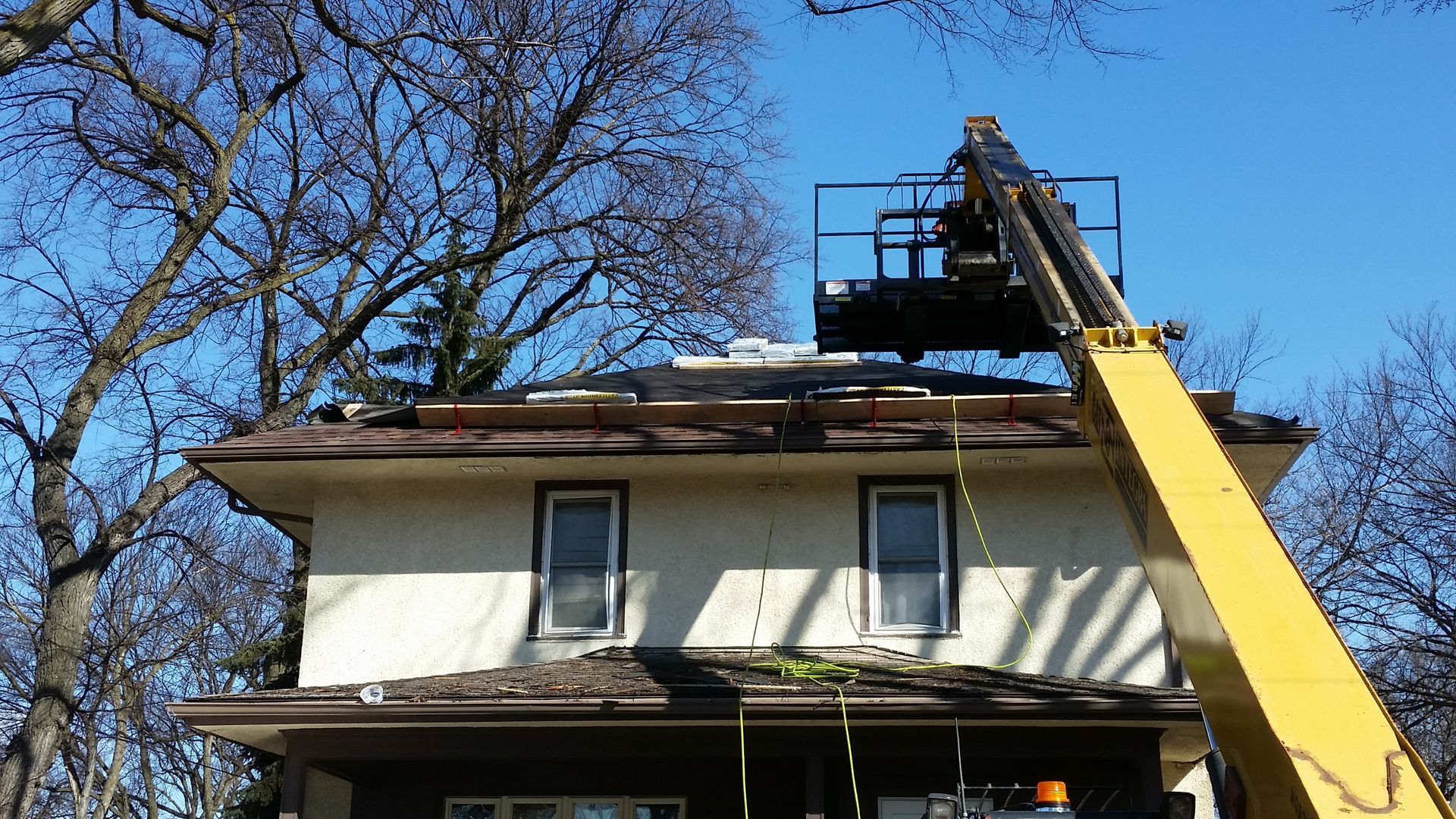 Button
Button
We have your roof services covered
Asset Services LLC is home to a seasoned roofing contractor you can count on for first-rate service and personalized customer care. We offer a variety of services, including:
- Asphalt shingle installation
- Roof attic ventilation
- Roof inspection
- Roof hail damage insurance claims
- Roof repair
- Soffit repair
- Fascia repair
- Shingle wind damage repair
- Flashing repair
- Leaking skylight replacement
- Skylight installation
- Storm damage repair
We'll go over your repair or replacement job thoroughly by providing a detailed roofing material and labor cost estimate, so you'll know what to expect before we begin. Need more information? Visit our
FAQ section for answers to the most common roofing questions.
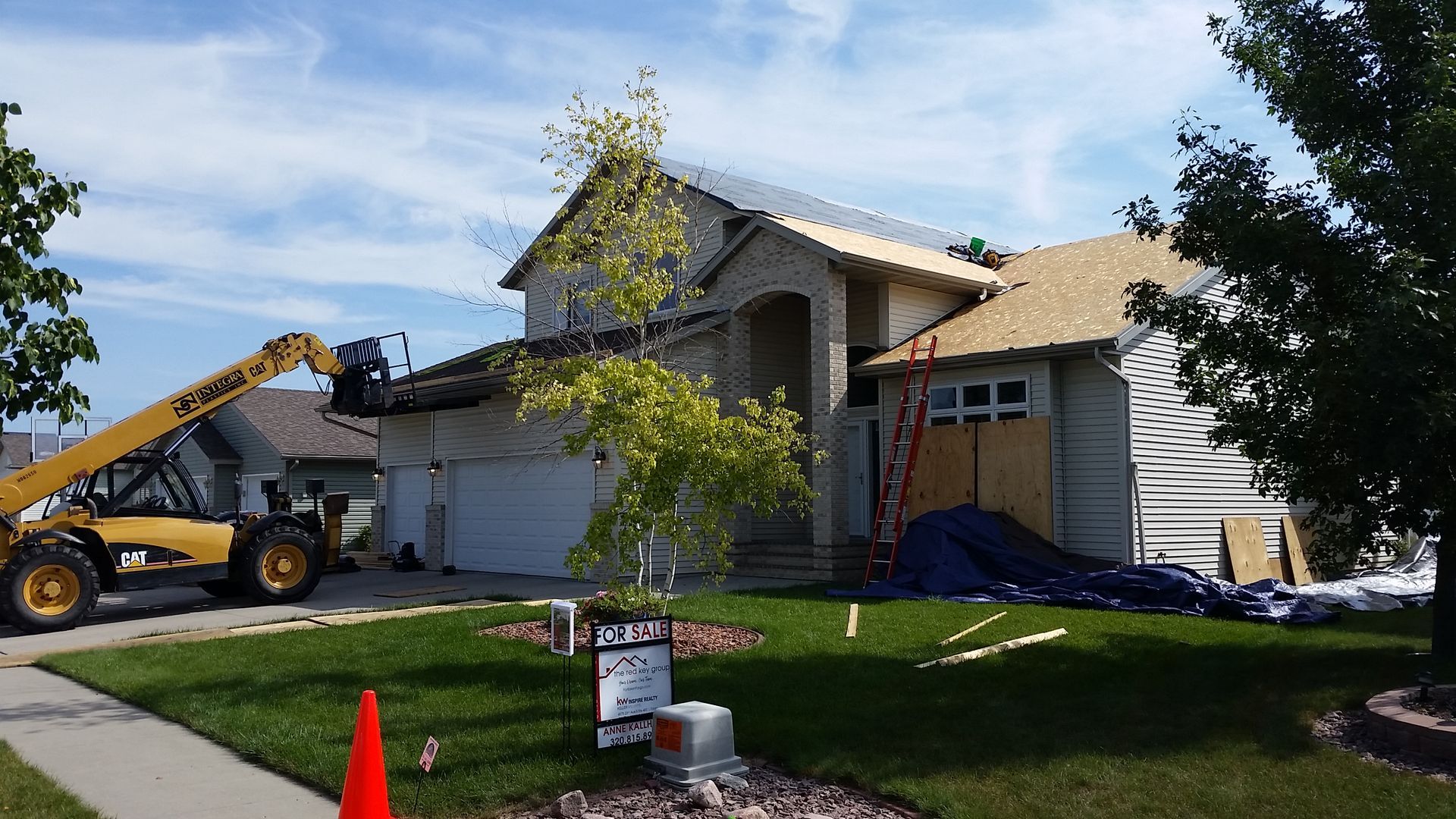 Button
Button
Understanding Roof Replacement Costs: Solutions Crafted for Fargo-Moorhead Homeowners
We understand that dealing with roofing problems can be frustrating. That's why we're committed to providing thorough roofing quotes and competitive pricing. If you're seeking reliable roof installation or repair services from a licensed, bonded, and insured local Fargo-Moorhead roofer, turn to Asset Services LLC.
Homeowners often ask roofers what they charge per square (100ft2) for a brand new roof. Faced with uncertainty, some homeowners turn to the internet for answers before consulting a roofing professional. However, if all roofs were exactly the same, then generic online blog postings and roofing calculator average cost answers would be relevant. Nonetheless, it’s important to recognize that online roofing cost calculators are NOT a reliable tool to accurately estimate the cost of a new roof installation.
The price of a roof replacement is subject to multiple factors, such as the roof pitch, architectural intricacies, additional layers of material requiring removal, unexpected repairs, accessibility to the work area and the chosen quality of the new roofing material. Additionally, in Fargo-Moorhead, where the temperatures can plunge to -30°F in winter and soar above 100°F in summer, roof longevity depends on material choice and proper installation—factors we weigh carefully in every project, knowing that a well-built roof isn’t just an upgrade, but a necessity in this climate. Ask us how much a new asphalt shingle roof replacement will cost by phone or submit the
request form
on this page. Don't delay, request a residential roofing price quote, to start budgeting for your project today!
Hire Us For Your Next Reroofing Project in the Fargo-Moorhead Area
SUBMIT AN ONLINE
SERVICE REQUEST FORM OR CALL (701) 552-2533 FOR A FREE QUOTE IN FARGO, ND & MOORHEAD, MN
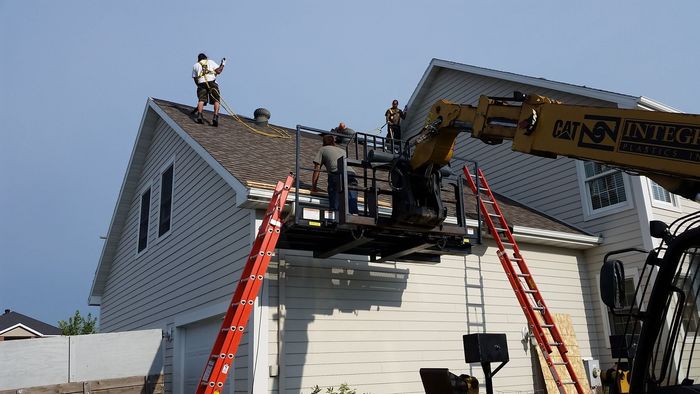 Button
Button
How do I know if my roof needs to be replaced?
- Look for missing, torn, curling, or lifting shingles, sagging areas, water stains inside your home, noticeable granule loss in gutters, or frequent leaks. If your roof is over 25-30 years old, depending on the quality of the asphalt shingles, it may need replacing. A professional roofing assessment can help determine if replacement is necessary.
What is the initial process for getting my roof replaced?
- The initial process typically involves requesting an estimate from several roofing companies, scheduling an onsite inspection, reviewing multiple bids, selecting materials and colors, signing a contract, paying a deposit and obtaining necessary permits if required by your local municipality.
How do I request a roof inspection and estimate?
- Contact Asset Services LLC for a roof inspection and free cost estimate by calling (701) 552-2533 or by submitting a request through our online form. We proudly serve the roofing needs of the Fargo-Moorhead metropolitan area consisting of West Fargo, ND; Fargo, ND; Moorhead, MN; Dilworth, MN; Horace, ND; Harwood, ND, and many nearby cities.
How do I choose the right roofing material for my home?
- When choosing the right roofing material, consider factors such as durability, cost-effectiveness, aesthetics, and local climate conditions. Asphalt shingles are a great option due to their versatility and affordability. At Asset Services LLC, we offer a variety of high-quality asphalt shingle options from trusted brands like Atlas and CertainTeed, each offering unique features to meet your specific needs. Our team can help you select the best shingles for your home, balancing performance, appearance, and budget.
Do you offer financing options for roof replacement projects?
- Asset Services LLC offers financing options to help homeowners manage the cost of their roof replacement. Contact us for more information on available loan options.
What should I expect during the roof installation process?
- During the installation process, our team will begin by preparing your home and removing the existing roofing materials. We'll then inspect the roof decking for any damage and ensure it's securely nailed to the rafters. Next, we'll install ice and water barrier guard, synthetic felt underlayment, new drip edge, starter shingle courses, asphalt roofing shingles, roof flashing, and other necessary components. The process concludes with a thorough cleanup of the work area and a final inspection to ensure quality and satisfaction.
Do you offer warranties for a new roof installation?
- Asset Services LLC provides a 5-to-10-year in-house contractor warranty on full asphalt shingle roof replacements, with the length of the warranty dependent on the selected material. Additionally, manufacturers offer warranties on their roofing products.
How long does a roof installation typically take?
- The duration of a roof replacement project depends on various factors such as the size of the roof, weather conditions, and the complexity of the job. Asset Services LLC strives to complete projects efficiently while maintaining quality workmanship.
Is Asset Services LLC a licensed and insured roofing company?
- Yes, Asset Services LLC is a fully licensed, bonded, and insured roofing company. Our North Dakota contractor's license number is 40839, and our Minnesota contractor's license number is RR782465. We are also certified as a CertainTeed Master Craftsman Roofing Contractor. Adherence to building code regulations ensures that our customers receive professional, compliant roofing services.
Do you offer any post-installation support or roof maintenance services?
- Yes, we are committed to providing ongoing support to our customers even after the roof replacement is complete. Our team is available to address any questions or concerns you may have, and we can also provide guidance on proper roof maintenance to prolong the lifespan of your new roof. Additionally, if you encounter any issues or need repairs in the future, we're here to help.
What causes ice dams on roofs and how can I prevent them?
- An ice dam forms when snow on a roof melts and refreezes, creating a build-up of ice along the eaves. Ice dams occur on heated buildings with sloping roofs in cold climates with deep snow accumulation, as the snow creates an insulating layer that traps heat. The process begins when heat from the attic warms the roof’s surface, causing the snow in direct contact with the roof to melt. As the water encounters colder areas near the eaves and overhang, it refreezes, forming an ice dam. Over time, layers of ice accumulate, blocking drainage and causing water to back up under the shingles. This trapped water can eventually leak into the attic or through the roof, damaging insulation, ceilings, walls, and structural components.
- Several factors contribute to ice dam formation. Inadequate insulation allows heat to transfer into the attic through conduction, warming the roof and causing snow to melt. Poor attic ventilation traps warm air, preventing the roof from staying cold enough to prevent melting and refreezing. Roofs with low slopes or complex shapes accumulate more snow, increasing the likelihood of ice dams. Heavy snowfall combined with temperature fluctuations can exacerbate the problem. Additionally, due to architectural design, one side of the house may accumulate more ice where multiple roof planes converge and drain. These areas, especially along the lower edge of the roof, should have at least the bottom 3-4 feet of snow cleared after a heavy snowfall, particularly if excessive snow drifting occurs.
- To mitigate ice dams, it’s important to properly insulate your attic. Adequate insulation reduces heat loss, keeping the roof cold and preventing melting. Before adding additional insulation to the attic, verify that air baffles are properly installed between the rafters/trusses around the perimeter of the roof to prevent insulation from blocking the soffit air intake vents located under the eaves or overhang. Air sealing with closed-cell spray foam around penetrations in the attic floor, such as ducts, pipes, light fixtures, chimneys, electrical wires, and the difficult-to-insulate pinch point where the rafters/trusses meet the top plate of the exterior wall, is also essential. This ensures warm air and heat from the living space does not escape into the attic. Proper attic ventilation helps regulate the attic temperature, keeping the roof cold enough to prevent melting. Finally, installing an ice and water barrier under the shingles provides added protection against water infiltration in areas most vulnerable to ice dams.
- By addressing these issues, homeowners can significantly reduce the risk of ice dams and the costly damage they can cause.
What do Class 3 and Class 4 ratings mean for shingles?
- UL Solutions (Underwriters Laboratories) is a testing agency, originally founded to test building products to mitigate the risk of insurers. UL Solutions developed the widely used test standard 2218 (UL 2218) for roofing material impact resistance. The UL 2218 denotation is usually printed on the back of asphalt shingles and on the outside of the bundle packaging.
- Class 3 shingles must survive the impact of a 1.75-inch solid steel ball dropped twice from a height of 17 feet, while Class 4 shingles must withstand a 2-inch solid steel ball dropped twice from 20 feet. The weight of the steel ball is used to calculate the drop height, simulating the force of a hail strike. Each strike location must be impacted exactly twice. Multiple locations are tested on architectural shingles due to the thicker and thinner features of the material.
- Fractures, tears or cracks visible on the back of the shingle material are marked as a failure in this test. Damaged granules, depressions or breaches observable only on the top of the shingle, are not considered failures of the UL 2218 classification standards.
- It is recommended to choose a Class 3 or 4 shingle that weighs more within its rating category, as some shingles meet only the minimum weight requirement to pass impact testing. Heavier shingles generally provide greater durability and are better equipped to withstand the force of impacts, offering improved performance over time.
- FM Approvals (Factory Mutual Laboratories) developed an alternative testing standard, FM 4473, which uses freezer-produced ice balls launched at specific speeds and distances to test the impact resistance of roofing materials. However, this test is less commonly used by manufacturers.
- While the tests don’t perfectly simulate natural hail impacts, they provide a standardized and repeatable framework for assessing product durability in the lab. In a real storm, factors like roof pitch, age, and hailstone size can all affect how well shingles perform.
- Polymer-modified shingles, such as those containing styrene-butadiene-styrene (SBS), offer superior flexibility and durability. This flexibility helps the shingles withstand impacts, even in cold weather conditions. For example, the CertainTeed Northgate ClimateFlex shingles we offer are polymer-modified and carry a Class 4 impact resistance rating.
- Most insurance companies offer a discount on your homeowner's insurance policy for installing Class 3 or 4 impact rated roofing materials.
Should asphalt shingles be installed during the cold winter months?
- Asphalt shingles are not recommended for installation during the cold winter months due to several factors that can affect the performance and durability of the roofing system.
- In cold temperatures, the fiberglass mat at the core of asphalt shingles becomes brittle, making the shingles prone to cracking or breaking during handling and installation. This increases the risk of damage before the shingles are even installed. When the shingles are nailed down, the nail heads can also damage the fiberglass mat, which has become brittle due to the cold, weakening the overall integrity of the shingles and making them more susceptible to blowing off the roof.
- Additionally, asphalt shingles have adhesive strips that bond them together once exposed to heat and UV radiation from the sun. In low temperatures, the adhesive does not activate properly, meaning the shingles will not seal correctly. This can lead to reduced wind resistance and potential water infiltration. Over the winter, wind driven dust and dirt can accumulate on the sealant line, further hindering long-term adhesion. Manufacturers often recommend installing shingles within specific temperature ranges to ensure proper sealing and performance. Failure to follow these guidelines could void warranty coverage, leaving homeowners unprotected against material defects or premature failures. Similarly, ice and water barrier products, which are installed to protect against leaks in critical areas, also require heat to properly adhere to the roof decking. Without sufficient heat, the barrier will not bond as intended, reducing its effectiveness.
- Frigid conditions also make the shingles harder to work with, as they will not lie flat, making it difficult to achieve a secure, uniform installation. Cutting shingles in these conditions becomes more challenging as well. At roof-to-wall flashing intersections, vinyl siding becomes brittle in freezing temperatures, increasing the risk of cracking or damage when removing shingles in these areas. This adds to the difficulty and cost of installations during colder months. Snow-covered ground and ice-filled gutters hinder proper debris cleanup after installation, often necessitating a follow-up visit in the spring to ensure a thorough and complete final cleanup. Icy, slippery surfaces further raise safety concerns, delaying the process and increasing labor costs. Snowstorms and other seasonal weather interruptions can also extend the time required to complete the roof.
- In these conditions, one of the special precautions required is applying four evenly spaced one-inch dabs of roof sealant to each shingle and pressing the shingle down into the sealant after nailing. This process compensates for the adhesive strip not activating but significantly increases the labor required for installation. Furthermore, the hand-applied roofing sealant may not cure effectively due to freezing temperatures, reducing its ability to provide a durable, long-lasting bond.
- While these special precautions can allow for asphalt shingles to be installed in colder temperatures, it’s best to wait until temperatures are consistently above 40°F to ensure optimal installation conditions, reduced labor, and long-lasting results.
What should I do if I suspect my roof has been damaged by hail?
- If you suspect that your roof has sustained damage from hail and/or wind, it's crucial to take immediate action to assess the situation. Record the date of loss of the suspected storm damage. Conduct a visual inspection of your roof to look for any signs of damage, such as missing, creased, or broken shingles, as well as dents on soft metal components. Additionally, check for bruising of the fiberglass matting or granule loss from hail strikes on asphalt shingles. A roofing contractor can assist in documenting any damage to your roof, including taking photographs to provide visual evidence of the extent of the damage.
- If damage is found, contact your homeowners insurance agent to start a total loss claim for storm damage and inform your insurance agent of the date of loss to your roof. The exact claims process varies by insurance company, but on average, homeowners have at least a year to initially file a hail and/or windstorm damage loss claim and another year from the date the claim was filed to complete the roof restoration work.
- Your insurance company will dispatch an insurance claims adjuster to inspect your roof for damage. If a total loss claim is approved, your insurer will send you a line-item replacement cost value (RCV) adjustment, which your roofer can help review for accuracy. Your insurance company will then release an actual cash value (ACV) check, representing the current value of the roof, calculated as the cost of a new roof today minus the total number of years the roof has been installed, with the deductible listed in your insurance policy deducted from the initial actual cash value check. If you have a mortgage, the mortgage company usually has to endorse the check.
- If your insurance policy contains recoverable depreciation coverage, the insurance company will hold back a depreciation check until the new roof is installed by a roofing contractor. The percentage of the insurance claim held back as depreciation is determined by the age of the roof. For instance, an insurance policy may deem the useful lifespan of an asphalt shingle roof to be 25 years. If your roof is 15 years old, then 60% of your insurance claim may be held back as depreciation. Once the roof installation is complete, insurers most often request a copy of the final roof work invoice that you received upon completion of your project to release the final recoverable depreciation check.
North Dakota License #40839
Minnesota License #RR782465
Quick Nav
Service Areas
Services
BUSINESS HOURS
- Mon - Fri
- -
- Sat - Sun
- Closed
Contact Information
Phone: (701) 552-2533
Email: jon@assetservicesllc.net
Location: 3523 45th St S Ste 100 Fargo, ND 58104
Closed During Winter
All Rights Reserved | Asset Services LLC

